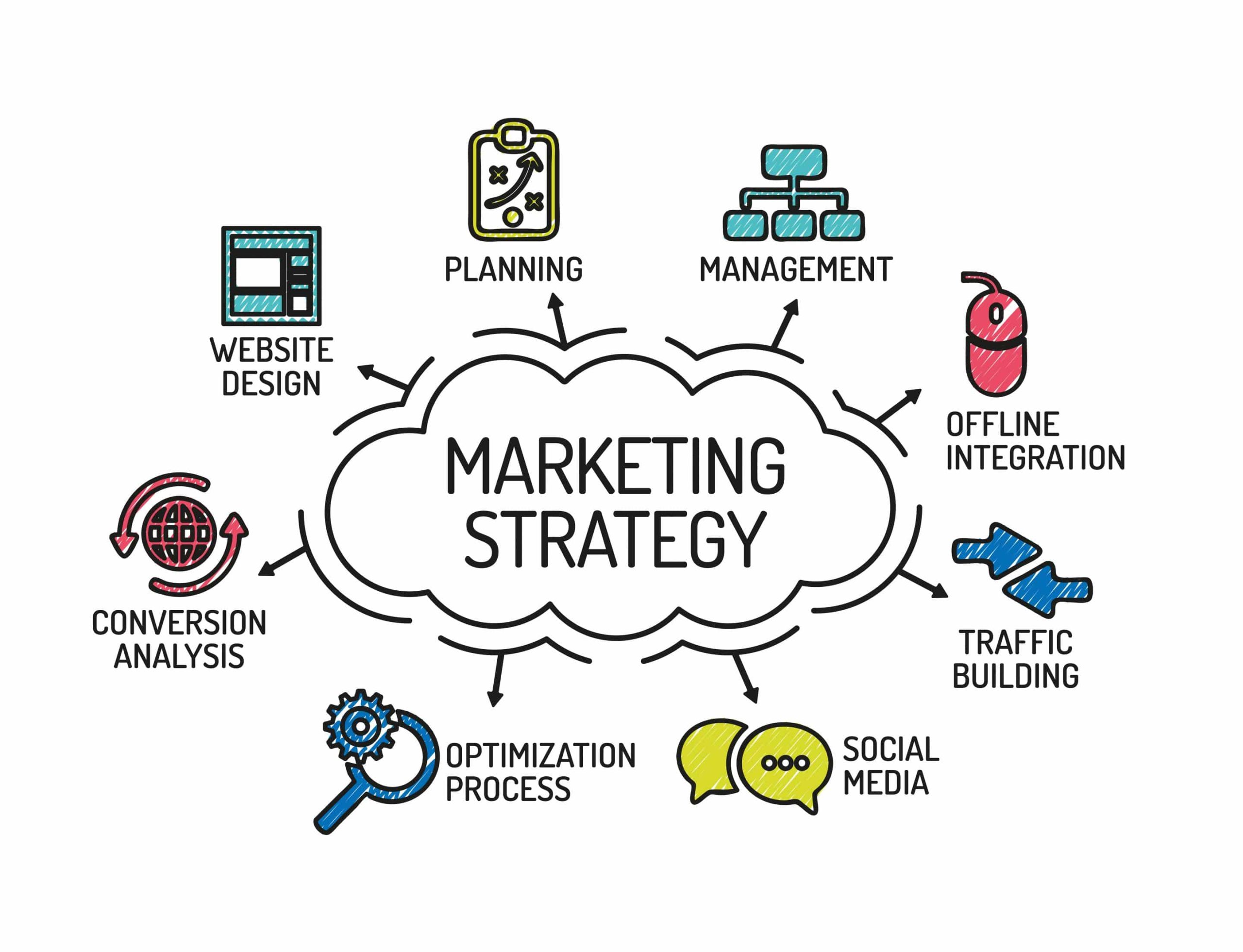The smart Trick of Marketing Plan That Nobody is Talking About
Marketing: Our Promotional Strategies Drive Client Engagement And Increase Sales
Marketing Techniques and Planning: A Development Process

Ever feel like you're throwing spaghetti at the wall, hoping something sticks? That's typically what happens when marketing strategies aren't carefully planned. A well-defined development procedure is the foundation of any successful marketing effort. It has to do with more than just imagination; it has to do with structure and insight.
Laying the Foundation: Research and Analysis
Before diving in, you need to understand the landscape. Who are you attempting to reach? What are their requirements? What are your rivals doing? Thorough market research study is vital. I keep in mind when, a company introduced a product without understanding their target market's preferences, and it tumbled miserably. Don't let that be you!
- Market analysis: Comprehend the market size, development rate, and patterns.
- Consumer profiling: Develop in-depth personas of your ideal customers.
- Competitive analysis: Recognize your competitors, their strengths, and weaknesses.

Setting Goals: What Do You Want to Attain?
What are your goals? Increase brand awareness? Drive sales? Generate leads? Your objectives need to be wise-- Specific, Measurable, Achievable, Appropriate, and Time-bound. I indicate, what's the point of doing something if you do not understand what you're trying to accomplish? It's like setting sail without a location in mind!
Crafting Your Method: The Roadmap to Success
This is where the magic occurs. Your technique outlines how you'll achieve your objectives. Will you concentrate on content marketing, social media, email marketing, or a combination? What's your unique selling proposition? The secret is to separate yourself and provide something valuable to your target here audience. Is your strategy a well-paved roadway, or a rough track filled with holes? This will determine your success!
Here are some typical marketing techniques:
- Content Marketing: Developing and distributing valuable material to attract and engage your target audience.
- Social Network Marketing: Utilizing social networks platforms to build brand name awareness and link with customers.
- Email Marketing: Sending targeted emails to support leads and drive sales.
Application and Execution: Putting Strategies into Action
A fantastic technique is ineffective without effective implementation. Appoint duties, set timelines, and allocate resources. Don't simply strategy; do! This step can be the most tough, as it requires coordination, communication, and dedication.
Monitoring and Evaluation: Determining Your Results
Are your efforts paying off? Track your key efficiency indications (KPIs) and evaluate your results. What's working? What's not? Be prepared to adjust your technique based upon your findings. This iterative process is important for continuous improvement. It's like examining the compass on a long journey to guarantee you're still headed in the right direction. Are you?
In the ever-evolving world of marketing, a robust preparation development process is not just an advantage; it's a requirement. By concentrating on research study, clear goals, and adaptive techniques, you can navigate the complexities and accomplish lasting success.
Target Market: Finding Your Marketing Sweet Area
Ever feel like you're yelling into deep space? That's what occurs when your marketing misses its mark. It's not about reaching everyone; it has to do with getting in touch with the right individuals. Believe of it like this: trying to sell snowboards in the Sahara. You may get a few curious onlookers, but you're not precisely going to corner the market. Why use up the energy? Instead, concentrate on where the snow falls and the snowboarders are already collecting. That focus is your target audience.
Why Section? Avoiding the Snowboard-in-the-Desert Circumstance
Segmentation is the art of dividing your possible customer base into smaller sized, more workable groups based on shared characteristics. Picture a Venn diagram-- each circle represents a section, and the overlap is where the magic happens, where the most responsive consumers reside. It's not adequate to know you're offering to "women." Are they Gen Z fashionistas or soccer mommies in their 40s with a penchant for organic groceries? The more granular you get, the more efficient your messaging ends up being. So, rather of one-size-fits-all, you're crafting bespoke experiences. Consider it as customizing a match versus buying off the rack.
One of the most significant stumbles? Assuming your ideal consumer is simply like you. As marketers, we fall prey to this all the time. We've all heard it "I like it so they should like it". News Flash. That's ego talking, not data. Your personal choices are unimportant. Let the market speak. Evaluate the data. Listen to what your existing customers are stating (and not saying) Discover the commonness, and after that build your sections around those findings. This is the way to avoid a costly misfire.
Tools of the Trade: Unveiling Your Perfect Client
How do you really do this? Start with information. Lots of it. Analytics platforms, client studies, social networks insights-- these are your treasure maps. Look for patterns. Are there age demographics that regularly transform? Geographical locations where your item resonates? Psychographic qualities that define your most loyal clients?
- Demographics: Age, gender, earnings, education, occupation
- Geographics: Area, environment, population density
- Psychographics: Lifestyle, values, interests, attitudes
- Behavioral: Purchase history, item usage, brand name loyalty
Do not hesitate to get innovative. Often, the most valuable insights originate from unforeseen places. Consider using a strategy called "Jobs to Be Done." Instead of concentrating on the features of your item, consider what "job" your consumer is employing it to do. Are they buying your software application to save time, decrease tension, or impress their boss? Comprehending the underlying inspiration can unlock new segments you never considered. And keep in mind, this isn't a one-time exercise. The market evolves, therefore need to your understanding of it. Regularly revisit your division method to guarantee it stays relevant and reliable, which your marketing dollars are being spent carefully.
Marketing Channels and Promotional Activities: A Deep Dive
Ever feel like your message vanishes into the space? It's a common dilemma. The marketing landscape is a sprawling, ever-shifting surface. Choosing the right marketing channels and marketing activities is not practically exposure; it's about resonance. Think about it as crafting a completely tuned instrument-- each string (channel) must vibrate in harmony to develop a compelling melody (campaign) But what takes place when a string snaps, or even worse, is never even strung?
Navigating the Channel Maze
Picking the proper channels is a tactical crucial. Are you pursuing brand awareness, lead generation, or direct sales? The answer dictates your course. To illustrate, consider the tale of two projects: One, a carefully crafted social networks blitz that yielded absolutely no conversions, and the other, a targeted email sequence that resulted in a surge of excited customers. The distinction? Positioning. The e-mail project spoke straight to a pre-qualified audience currently interested in the offering.
Advertising Activities: More Than Just Noise
Promotional activities are the lifeblood of any marketing strategy. Sales promos, public relations, and content marketing are all viable options. What takes place when your material marketing efforts are neglected? This typically comes from an absence of value. Are you supplying authentic insights and options, or simply transmitting self-serving advertisements? The key is to end up being a trusted advisor, not a relentless peddler.
- Material Marketing: Deliver value through informative and engaging content.
- Social Network Marketing: Engage with your audience and construct a community.
- Email Marketing: Support leads and drive conversions.
- Browse Engine Optimization (SEO): Enhance your website's exposure in search engine result.
Typical Pitfalls and Professional Insights
Among the most significant obstacles companies face is failing to adapt to market changes. Think of introducing a product with a catchy motto, only to find that a major cultural shift renders it tone-deaf and offensive. Remaining nimble and responsive is vital. Regular analysis of project efficiency is likewise essential. Are your efforts yielding the preferred outcomes? If not, do not hesitate to pivot. The only constant in marketing is change.
Another frequent oversight is disregarding consumer segmentation. Trying to interest everyone is comparable to yelling into the wind. Determine your perfect customer and customize your messaging accordingly. This needs a deep understanding of their requirements, desires, and behaviors. By focusing your efforts on a particular target audience, you can maximize your impact and reduce lost resources.
Ultimately, successful marketing hinges on a mix of tactical preparation, innovative execution, and undeviating adjustment. By understanding the nuances of different marketing channels and promotional activities, you can craft a campaign that resonates with your target market and drives concrete outcomes.
Marketing Research Study and Competitive Analysis
Ever feel like you're roaming in the dark, looking for a light switch that simply won't flip on? That's how introducing a marketing campaign without strong marketing research study feels. It's like baking a cake without a recipe-- you might wind up with something edible, but opportunities are it will not be a masterpiece. How do you illuminate your course?
Unveiling the Landscape: Marketing Research Strategies
Market research isn't just about gathering information; it has to do with understanding the extremely heart beat of your target market. Consider it as becoming an investigator, piecing together ideas to fix the mystery of what your possible customers genuinely prefer. Are they craving benefit? Sustainability? Or perhaps a touch of nostalgia? You need to know. One typically overlooked element is psychographic segmentation. It's insufficient to know their age or income; you need to comprehend their values, lifestyle, and goals. What makes them tick?
One insider idea? Do not rely exclusively on studies. Observe real-world habits. If introducing a new line of environment-friendly items, invest time in farmers' markets or natural grocery shops. Speak to people, observe their getting practices, and get a feel for their genuine concerns.
Measuring the Competition: Competitive Analysis
Now, let's discuss your rivals. Disregarding them is like going into a boxing ring with your eyes closed. A competitive analysis involves identifying your competitors and evaluating their techniques to determine their strengths and weak points relative to your own. It's not about copying them; it's about identifying chances to separate yourself and sculpt out your niche. Have you ever observed how some cafe thrive best beside a Starbucks? It's because they have actually identified a specific market section that Starbucks isn't fully serving, like a choice for locally sourced beans or a comfortable, intimate atmosphere.
The biggest pitfall with competitive analysis isn't the absence of data but rather a failure to act on it. All the spreadsheets and charts worldwide won't assist if you don't translate those insights into concrete actions. And remember the significance of looking beyond direct competitors. Think about indirect competitors also. Who else is vying for your target market's attention and budget?
- Identify Secret Competitors: Who are they, and what are their market shares?
- Examine Their Marketing Methods: What channels are they utilizing? What's their messaging?
- Examine Their Strengths and Weaknesses: What are they proficient at, and where are they doing not have?
- Discover Opportunities for Differentiation: How can you stand out from the crowd?
Remember, the marketing landscape is ever-evolving. Continuous tracking and adaptation are important for long-lasting success. By embracing both marketing research and competitive analysis, you can navigate the intricacies of the market and position yourself for continual growth.